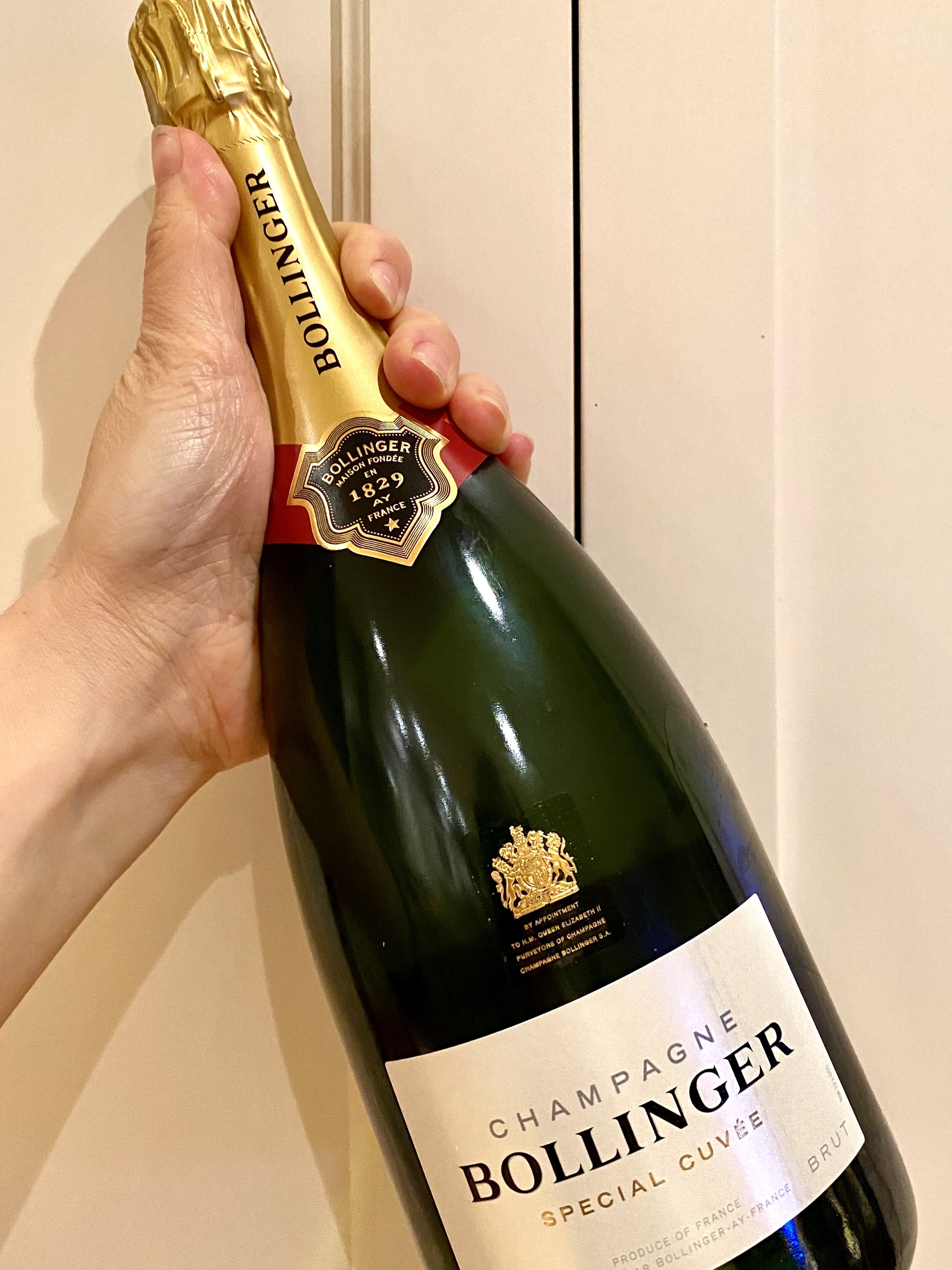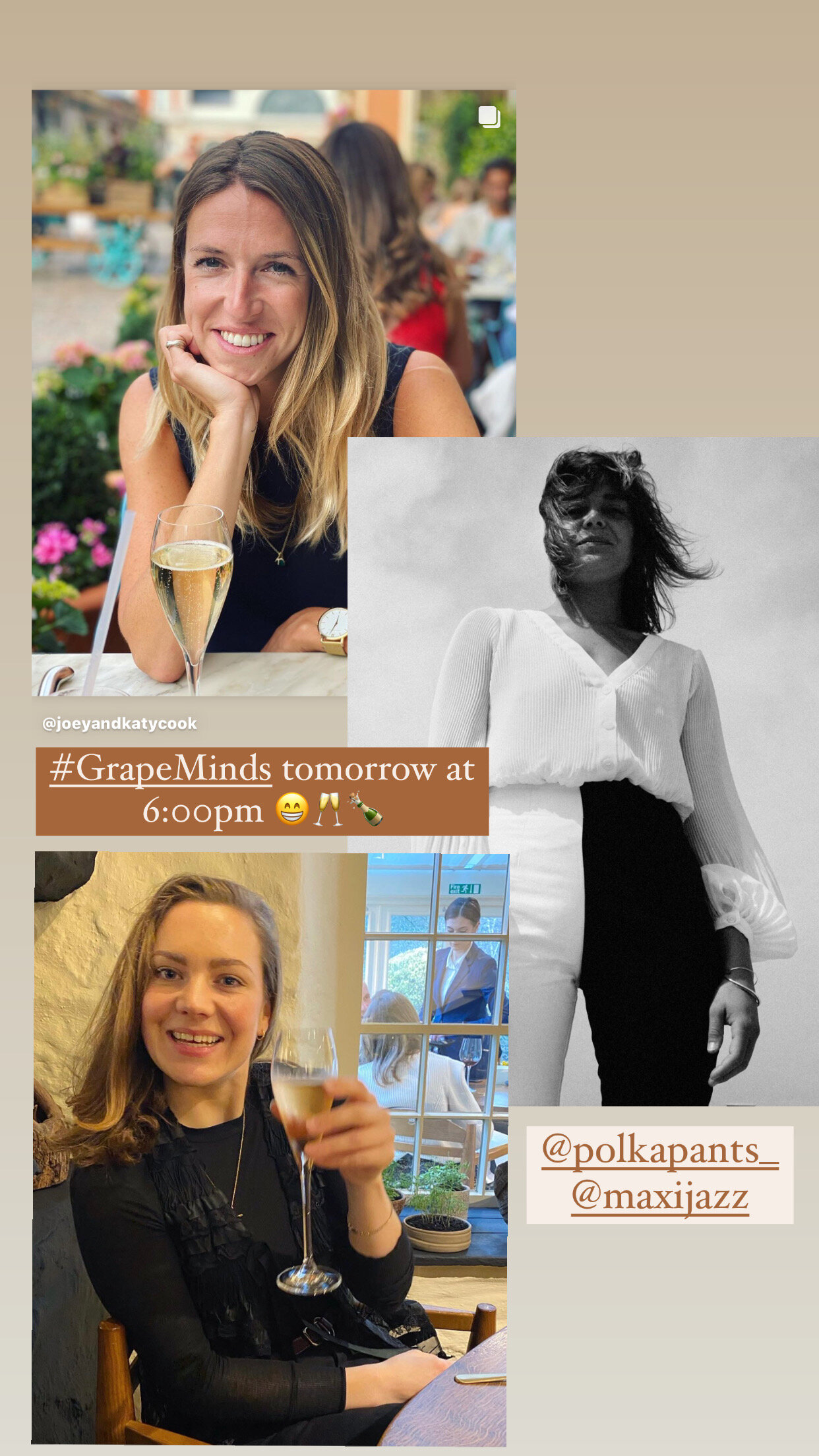Champagne, France
Grape Minds episode five saw us taste Bollinger, Special Cuvée, Brut with Maxine Thompson, founder of Polka Pants. You can catch the full recording on our IGTV. With or without lockdown this was an epic Friday night. Maxi you’re a hoot - thank you for joining us!
5 facts about Champagne:
Let’s start with the basics… Champagne is not a general term for sparkling wine… it’s a wine producing region in northern France known the world over for its famous sparkling wine.
Only 3 grape varieties are permitted in Champagne: Chardonnay (white), Pinot Noir (red/black), and Pinot Meunier (red/black) and most champagnes are a blend of all three.
Blanc de blancs means ‘white of whites’, and this indicates a Champagne made from 100% Chardonnay grapes. Blanc de noirs means ‘white of blacks’, and this indicates a Champagne made with black grapes only, this is usually the Pinot Noir, rather than the Pinot Meunier.
The methods of production used in Champagne are highly traditional and labour intensive; elsewhere this ‘champagne method’ is referred to as ‘traditional method’. Cava from Spain, Crémant from France and Luxembourg, Cap Classique sparkling wine from South Africa, Franciacorta from Northern Italy, and some top English sparkling wines all use the traditional Champagne method of production.
Champagne is often bready, yeasty, toasty or nutty… how? These prized Champagne flavours are imparted during the wine’s secondary fermentation ‘on its lees’; (‘lees’ refers to the dead yeast deposits which settle in the bottle post fermentation). The longer the Champagne has been ‘aged on lees’ the '“bread-ier” the champagne. Non-vintage bottles must be aged for 12 months on lees, and vintage bottles must be aged for at least 3 years on lees.
3 pairings for Champagne:
Battered & deep-fried oysters
This was Katy’s pairing. Oysters and champagne are arguably the most classic food and wine pairing. Battering and deep-frying takes it to the next level… You’ve got the pleasing contrast of temperatures - piping hot and very chilled; the crucial interplay of fat and acid - the champagne’s acidity ‘cuts through’ the rich and crispy batter and the silky oyster within; and the complimentary ‘flavour match’ of the champagne’s bready notes with beer batter’s golden, toasty exterior.
Langres fondue
Maxine’s pairing blew our socks off! This is a dish her mother serves at Christmas time… think of it as the most decadent fondue you’ll ever eat. Langres is a soft-ripened cow’s cheese which comes for happy, free roaming cows in the Champagne region. Maxi’s mother baked the cheese until molten, prises off the top, and floods the cavity with a little Champagne! The family tucks in with hunks of her homemade blueberry sourdough - WOW. We shall attempt to recreate this very soon. Langres is available via Farmdrop here.
Baked sole, with a sage, lemon & hazelnut butter
While we don’t have a recipe for this on the site, the butter in question is very similar to the sage & hazelnut oil which tops our roasted shallot & gorgonzola fonduta. Heat a generous knob of butter in a small pan until it gently turns ‘noisette’, add in sage leaves and chopped toasted hazelnuts and very gently ‘fry’ for 1 minute before killing the heat and adding in the perfumed zest of a lemon. The rich, nutty, buttery, woody, floral and citric notes all harmonise with Champagne exceptionally well! Spoon this over baked lemon sole.




